CiA Draft Recommendation 303
CANopen
Additional specification
Part 1: Cabling and connector pin assignment
Version 1.6
03 June 2008
CAN in Automation (CiA) e. V.
�
Additional specification – Part 1: Cabling and connector pin assignment
HISTORY
Date
1999-10-10
2004-09-01
2004-12-30
2006-08-14
2007-06-08
2008-06-03
Changes
Publication of Version 1.0 as draft recommendation
Publication of Version 1.2 as draft recommendation
Publication of Version 1.3 as draft recommendation
Publication of Version 1.4 as draft recommendation
Publication of Version 1.5 as draft recommendation
Publication of Version 1.6 as draft recommendation
-
-
-
-
-
editorial clarifications
adding connector "Mini-Fit Jr.“
clarifying reference to the 7-pin pin-receptacle connector
clarifying of RJ45 connector pinning
clarifying of recommendation for CAN ground (chapter
5.3)
General information on licensing and patents
CAN in AUTOMATION (CiA) calls attention to the possibility that some of the elements of this
CiA specification may be subject of patent rights. CiA shall not be responsible for identifying
any or all such patent rights.
Because this specification is licensed free of charge, there is no warranty for this
specification, to the extent permitted by applicable law. Except when otherwise stated in
writing the copyright holder and/or other parties provide this specification “as is” without
warranty of any kind, either expressed or implied, including, but not limited to, the implied
warranties of merchantability and fitness for a particular purpose. The entire risk as to the
correctness and completeness of the specification is with you. Should this specification prove
failures, you assume the cost of all necessary servicing, repair or correction.
© CiA 2008
All rights reserved. Unless otherwise specified, no part of this publication may be reproduced or
utilized in any form or by any means, electronic or mechanical, including photocopying and microfilm,
without permission in writing from CiA at the address below.
CAN in Automation e. V.
Kontumazgarten 3
DE - 90429 Nuremberg, Germany
Tel.: +49-911-928819-0
Fax: +49-911-928819-79
Url: www.can-cia.org
Email: headquarters@can-cia.org
2
CiA 2008 – All rights reserved
�
Additional specification – Part 1: Cabling and connector pin assignment
CONTENTS
1 Scope ...............................................................................................................................5
2 References .......................................................................................................................5
2.1 Normative references ..............................................................................................5
2.2
Informative references .............................................................................................5
3 Abbreviations and definitions ............................................................................................5
3.1 Abbreviations...........................................................................................................5
3.2 Definitions ...............................................................................................................5
4 Naming convention ...........................................................................................................6
5 AC and DC parameters .....................................................................................................6
5.1 Bus cable and termination resistors .........................................................................6
5.2 Un-terminated stub cable.........................................................................................7
5.3 CAN ground and galvanic isolation ..........................................................................8
5.4 External power supply .............................................................................................8
6 General purpose connectors .............................................................................................9
6.1 9-pin D-sub connector .............................................................................................9
6.2 15-pin D-sub connector.......................................................................................... 10
6.3 Multipole connector ............................................................................................... 11
6.4 RJ10 connector ..................................................................................................... 12
6.5 RJ45 connector ..................................................................................................... 13
6.6 Open style connector............................................................................................. 14
6.7 em069A-3 connector.............................................................................................. 15
Industrial connectors....................................................................................................... 16
7.1 5-pin “mini” style connector.................................................................................... 16
7.2 5-pin “micro” style connector.................................................................................. 17
7.3 5-pin “pico” style connector.................................................................................... 17
7.4 Han Quintax®......................................................................................................... 17
8 Special purpose connectors ............................................................................................ 18
8.1 Round connectors.................................................................................................. 18
8.1.1 7-pin round connector................................................................................ 18
8.1.2 8-pin round connector................................................................................ 19
8.1.3 9-pin round connector................................................................................ 20
8.1.4 10-pin round connector .............................................................................. 20
8.1.5 Mini-snap 10-pin round connector.............................................................. 20
8.1.6 12-pin round flange connector ................................................................... 21
8.1.7 9-pin flange round T-connector with ID-switch ........................................... 22
8.2 Han-Brid® CU ........................................................................................................ 23
8.2.1 Housing-side ............................................................................................. 23
8.2.2 Cable-side ................................................................................................. 24
IEEE1394/Firewire connector with shielding........................................................... 25
8.3.1 Chaining of the bus on the node ................................................................ 25
8.3.2 No chaining of the bus on the node............................................................ 27
8.4 Lift connectors ....................................................................................................... 28
8.4.1 Mini-Fit Jr. connector ................................................................................. 28
8.5 Automotive/Vehicle connectors .............................................................................. 28
8.5.1 7-pin socket connector............................................................................... 28
8.5.2 9-pin socket connector............................................................................... 28
3
8.3
7
CiA 2008 – All rights reserved
�
Additional specification – Part 1: Cabling and connector pin assignment
8.5.3 7-pin pin-receptacle connector................................................................... 28
8.6 Laboratory automation connectors ......................................................................... 28
8.6.1 Header 10-pin plug connector.................................................................... 28
4
CiA 2008 – All rights reserved
�
Additional specification – Part 1: Cabling and connector pin assignment
1 Scope
This document recommends cabling and pin assignment of bus connectors for CANopen-
based systems. It specifies also the naming conventions for the bus lines, ground lines and
shield connections.
2 References
2.1 Normative references
/ISO11898-2/
/DIN41652/
/IEC60130-9/
/IEC60947-5-2/
/ANSI/B.93.55M/
/CiA103/
/CiA301/
/CiA413-1/
/CiA420-1/
/CiA425-1/
/CiA436-1/
ISO 11898-2, Road vehicles - Controller area network (CAN) - Part 2:
High-speed medium access unit
DIN 41652, Steckverbinder für die Einschubtechnik
IEC 60130-9:1989, Connectors for frequencies below 3 MHz – Part 9:
Circular connectors for radio and associated sound equipment
IEC 60947-5-2:1997, Low-voltage switchgear and controlgear – Part 5-
2: Control circuit devices and switching elements – Proximity switch
ANSI/B.93.55M:1981, (R1988) Hydraulic fluid power solenoid piloted
industrial valves – Interface dimensions for electrical connectors
CiA 103, CANopen intrinsically safe capable physical layer specification
CiA 301, CANopen application layer and communication profile
CiA 413, CANopen device profile for truck gateways – Part 1: General
definitions
CiA 420, CANopen profiles for extruder downstream devices – Part 1:
General definitions
CiA 425, CANopen application profile for medical diagnostic add-on
modules – Part 1: General definitions
CiA 436, CANopen construction machine application profile – Part 1:
General definitions
Informative references
2.2
/AN96116/
AN 96116, Application note PCA82C250/251 CAN Transceiver, NXP
(formerly: Philips Semiconductors)
3 Abbreviations and definitions
3.1 Abbreviations
AC
CAN
DC
EMI
GND
Jr.
SJW
SHLD
Alternating current
Controller area network
Direct current
Electromagnetic interference
Ground
Junior
Resynchronization jump width
Shield
3.2 Definitions
Bus cable
The bus cable is terminated at both ends by termination resistors.
CiA 2008 – All rights reserved
5
�
Additional specification – Part 1: Cabling and connector pin assignment
Stub cable
The stub cable is an un-terminated cable, and should be as short as possible.
Socket connector
The socket connector may be powered.
Plug connector
The plug connector should be not powered; this is the reason why most devices are equipped
with plug connectors.
T-connector
The T-connector provides a point of attachment onto the bus cable. Devices may be
connected to the network either directly to the T-connector or with a stub cable. T-connectors
also provide easy removal of a device without disrupting network operation.
4 Naming convention
If connectors are used that are not mentioned in this document, the pins shall be named
(either in the accompanying manual or directly on the device) using the terminology shown in
Table 1.
Table 1 – Terminology for connectors
Signal description
CAN_L bus line (dominant low)
CAN_H bus line (dominant high)
CAN ground
Optional CAN shield
Optional CAN external positive supply
Optional ground
Notation
CAN_L or CANlow or CAN-
CAN_H or CANhigh or CAN+
CAN_GND or CANGND or Ground or GND
CAN_SHLD or CANSHIEL D or Shield or SHLD
CAN_V+ or CANV+ or V+ or UC or UCAN
OPT_GND or GNDopt or V- or 0 V
5 AC and DC parameters
5.1 Bus cable and termination resistors
The cables, connectors and termination resistors used in CANopen networks shall meet the
requirements defined in /ISO11898-2/. In addition, here are given some guidelines for
selecting cables and connectors.
Table 2 shows some standard values for DC parameters for CANopen networks with less than
64 nodes.
Table 2 – Standard values for DC parameters for CANopen networks
Bus cable (1)
Bus length [m]
Length-related
resistance [mΩ/m]
Cross-section
[mm2]
Termination
resistance [Ω]
Bit-rate [kbit/s]
0 to 40
40 to 300
300 to 600
600 to 1000
70
<60
<40
<26
0,25 to 0,34
0,34 to 0,6
0,5 to 0,6
0,75 to 0,8
124
150 to 300
150 to 300
150 to 300
1000 at 40 m
>500 at 100 m
>100 at 500 m
>50 at 1 km
(1) Recommended cable AC parameters: 120-Ω impedance and 5-ns/m specific line delay
6
CiA 2008 – All rights reserved
�
Additional specification – Part 1: Cabling and connector pin assignment
For drop cables a wire cross-section of 0,25 to 0,34 mm2 may be an appropriate choice in
many cases.
Besides the cable resistance, there shall be considered the real resistance of the connectors,
if calculating the voltage drop. The transmission resistance of one connector should be in the
range of 2,5 to 10 mΩ.
With the assumed values for
minimum dominant value
minimum differential input resistance
minimum termination resistance
requested differential input voltage
Vdiff.out.min
Rdiff.min
Vth.max
RT.min
= 1,5 V
= 20 kΩ
= 1,0 V
= 118 Ω
Table 3 defines the maximum wiring length is given for different bus cables and different
number of connected bus nodes.
Table 3 – Maximum wiring length
Wire cross-
section [mm2]
0.25
0.5
0.75
Maximum length [m] (1)
Maximum length [m] (2)
n = 32
200
360
550
n = 64
170
310
470
n = 100
150
270
410
n = 32
230
420
640
n = 64
200
360
550
n = 100
170
320
480
(1) safety margin of 0,2
(2) safety margin of 0,1
NOTE: If driving more than 64 nodes and/or more than 250 m bus length the accuracy of the VCC supply voltage for
the /ISO11898-2/ transceiver is recommended to be 5 % or better. You also have to consider the minimum supply
voltage of at least 4,75 V when driving 50 Ω load, i.e. 64 bus nodes, and at least 4,9 V when driving 45 Ω load, i.e.
100 bus nodes.
5.2 Un-terminated stub cable
As a rule of thumb, the following relation may be considered for a single stub cable length Lu:
with the specific line delay per length unit
and the time of the propagation segment
.
But also the cumulative drop length Lui should be considered, which is given by the following
relation:
CiA 2008 – All rights reserved
7
! Lu
Additional specification – Part 1: Cabling and connector pin assignment
This effectively leads to a reduction of the maximum trunk cable length by the sum of the
actual cumulative drop cable length at a given bit rate. If the above recommendations are met,
then the probability of reflection problems is considered to be fairly low.
5.3 CAN ground and galvanic isolation
In complete galvanically isolated CANopen networks CAN ground signal is carried in the cable
line. It is connected at only one point with the CAN ground potential. If one CAN device with
not galvanically isolated interface is connected to the network, the connection with the CAN
ground potential is given. Therefore only one device with not galvanically isolated interface
may be connected to the network.
The user is responsible to guarantee that the common mode rejection of the transceivers has
still reached the upper limit.
5.4 External power supply
The recommended output voltage at the optional power supply is +18 VDC < V+ < +30 VDC in
order to enable the use of standard power supplies (24 VDC).
8
CiA 2008 – All rights reserved
�

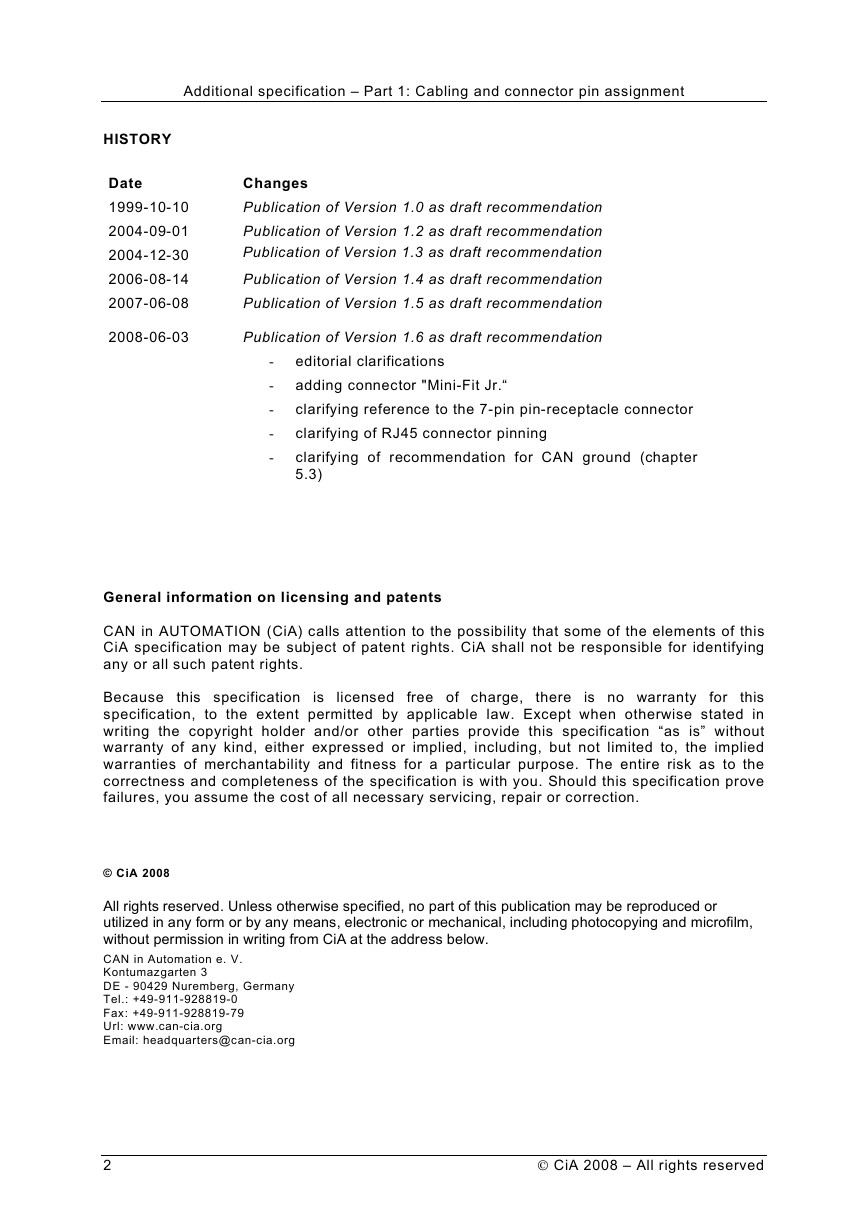
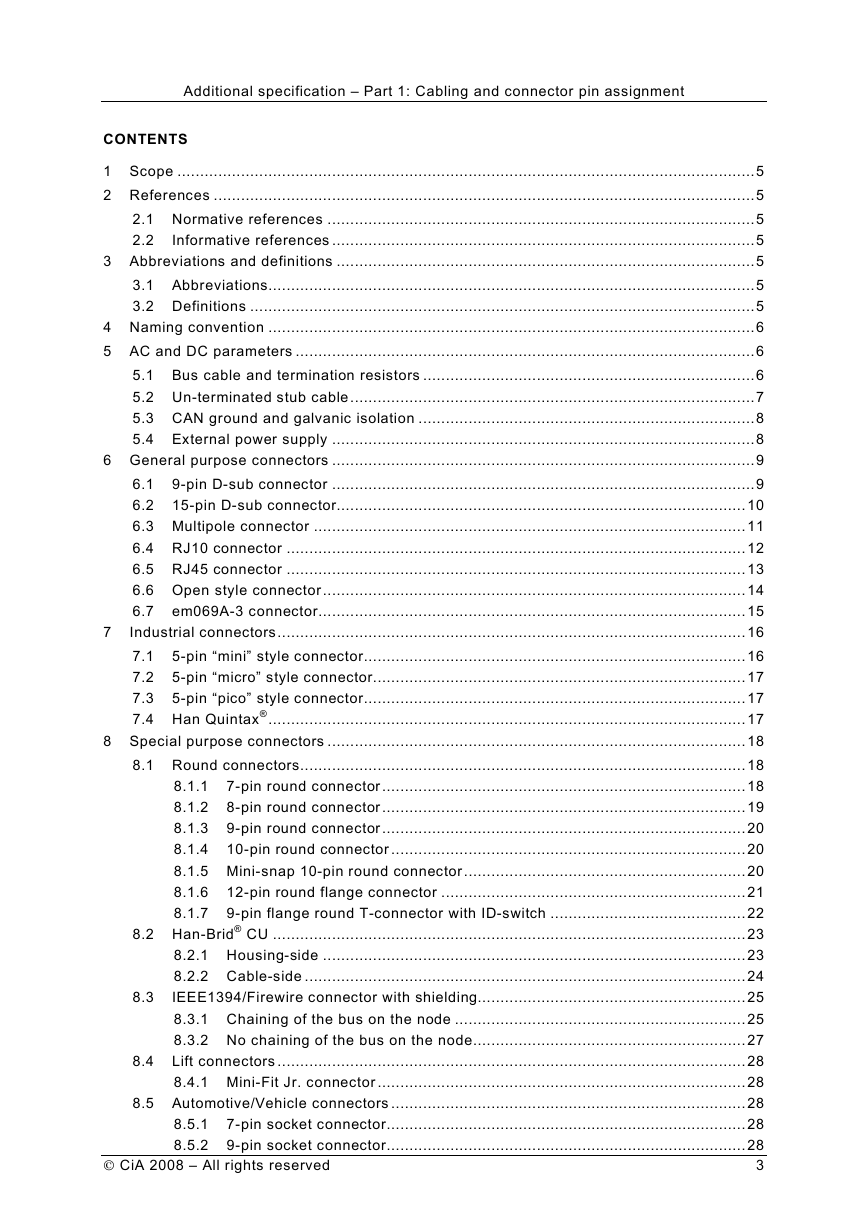
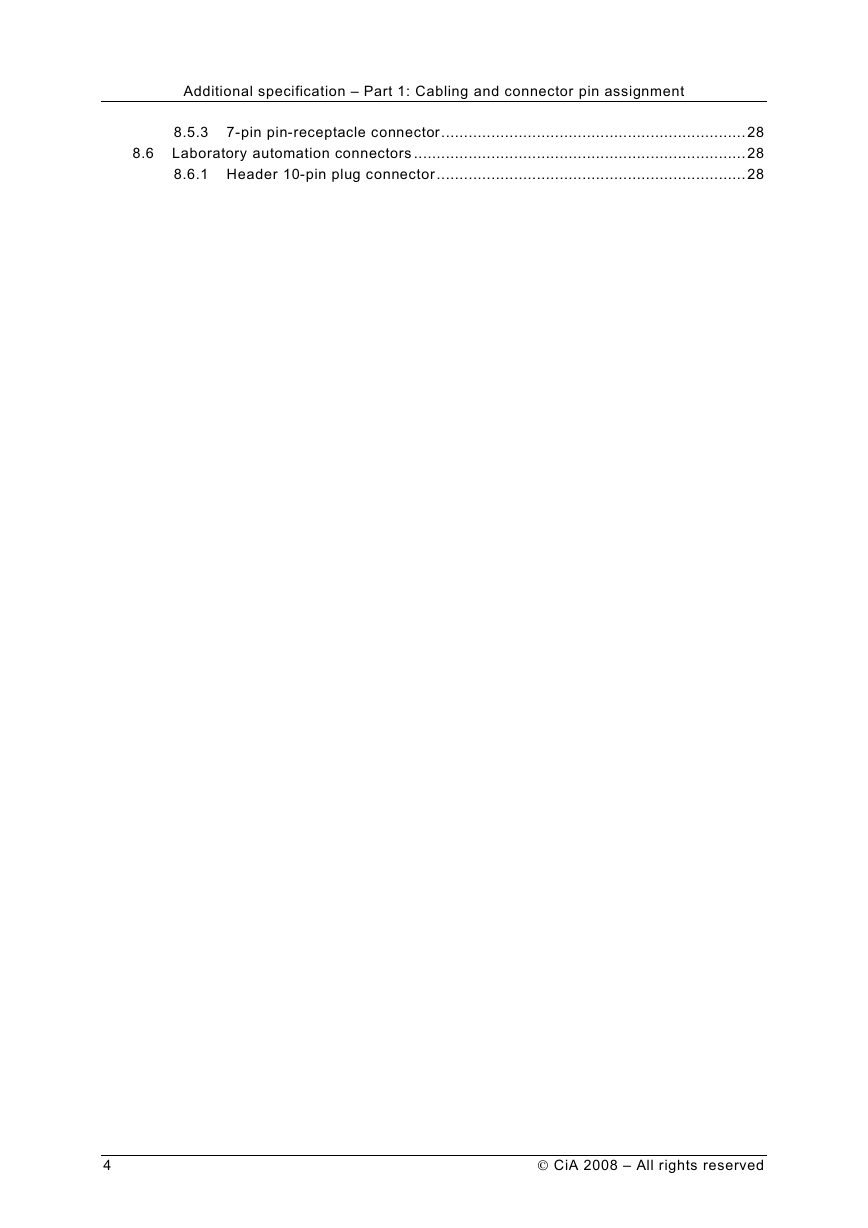
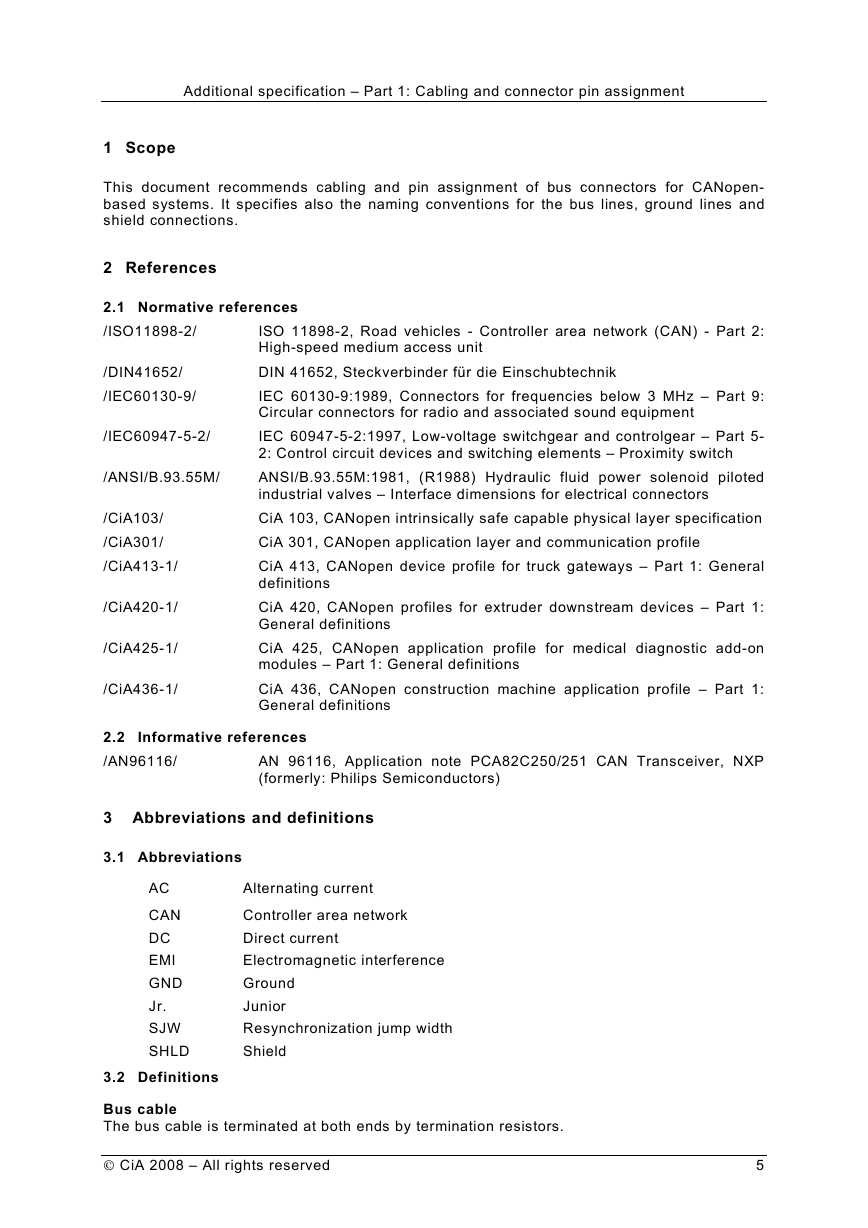
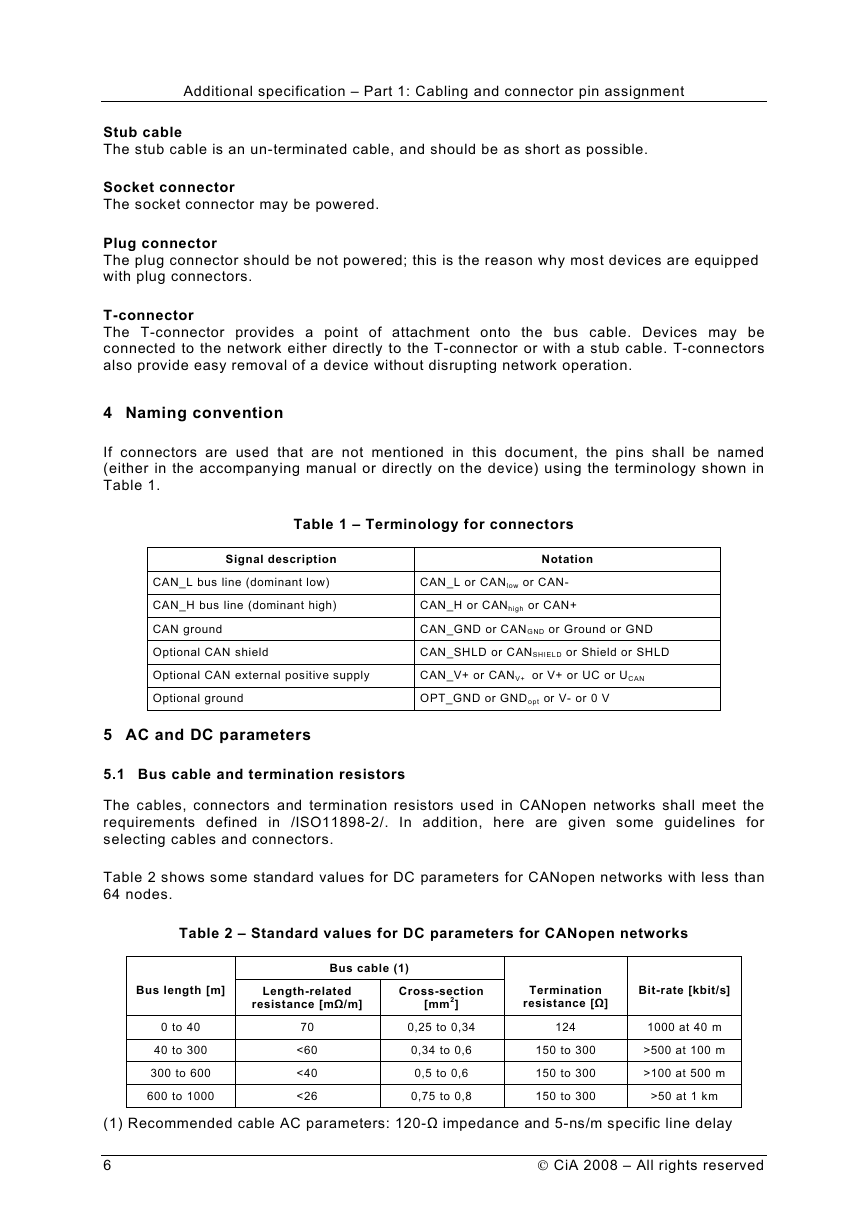
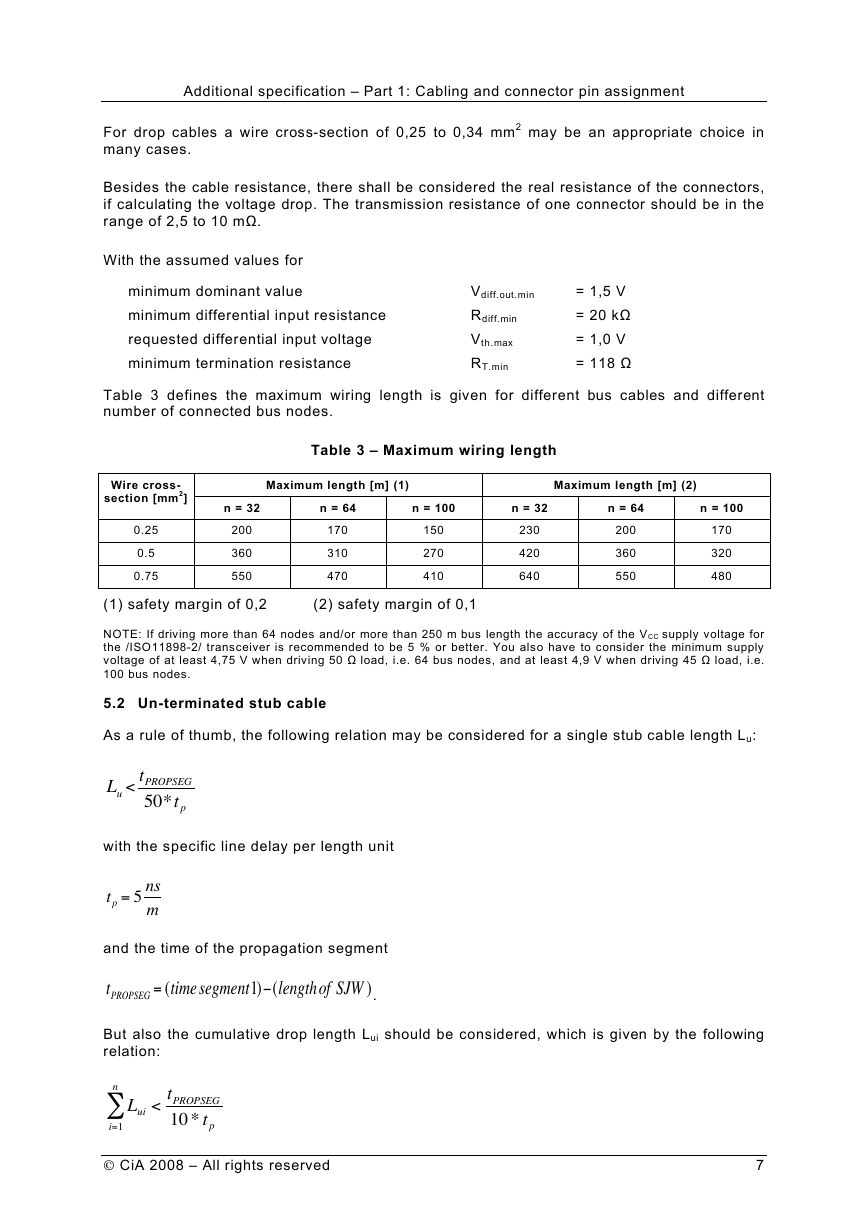
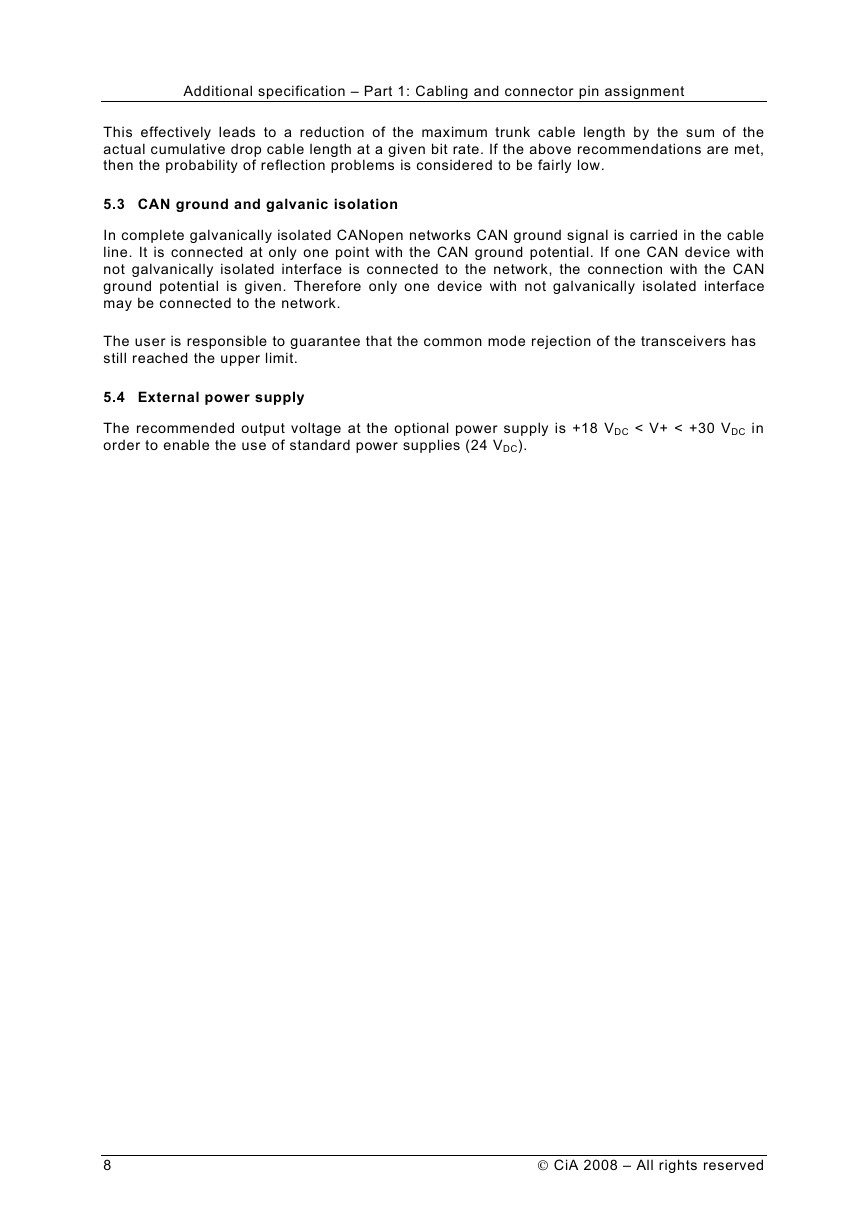








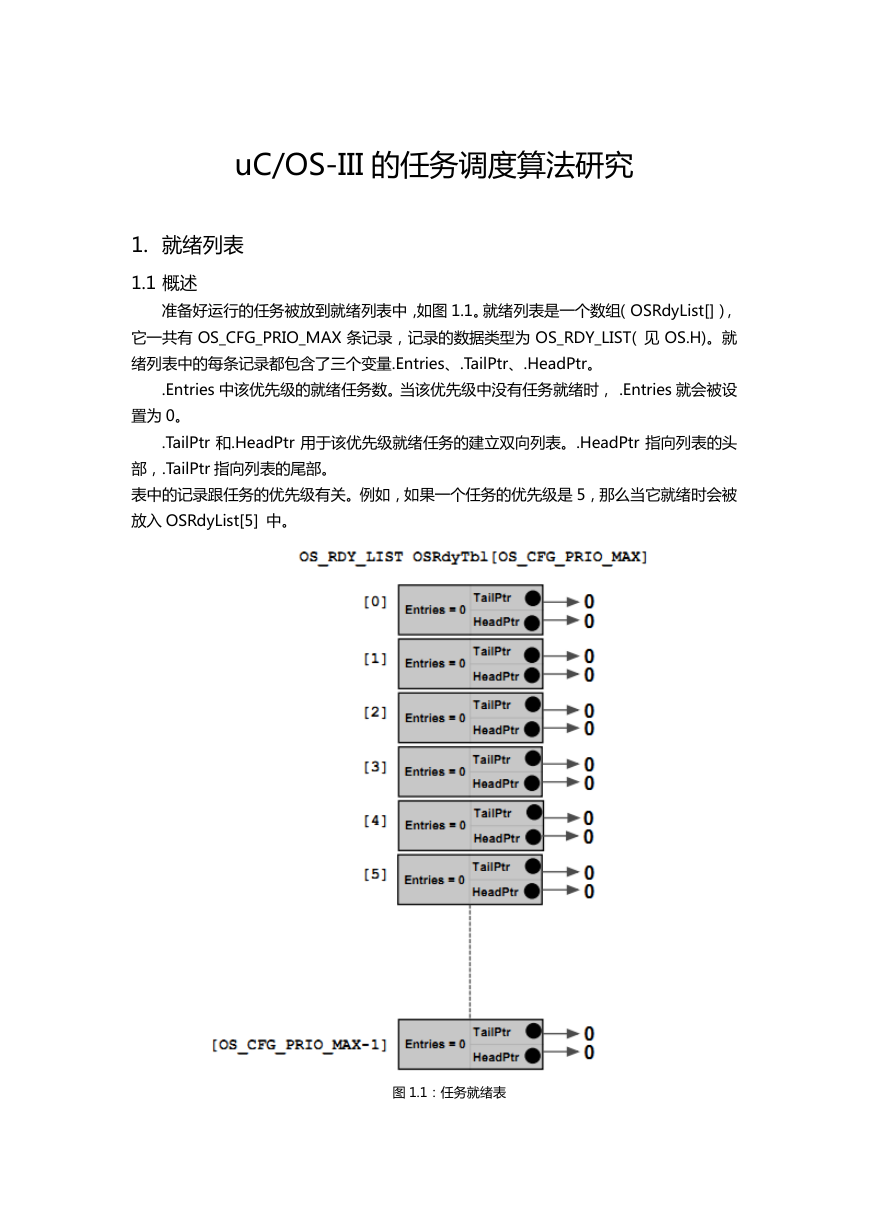 uCOS-III的任务调度算法研究.pdf
uCOS-III的任务调度算法研究.pdf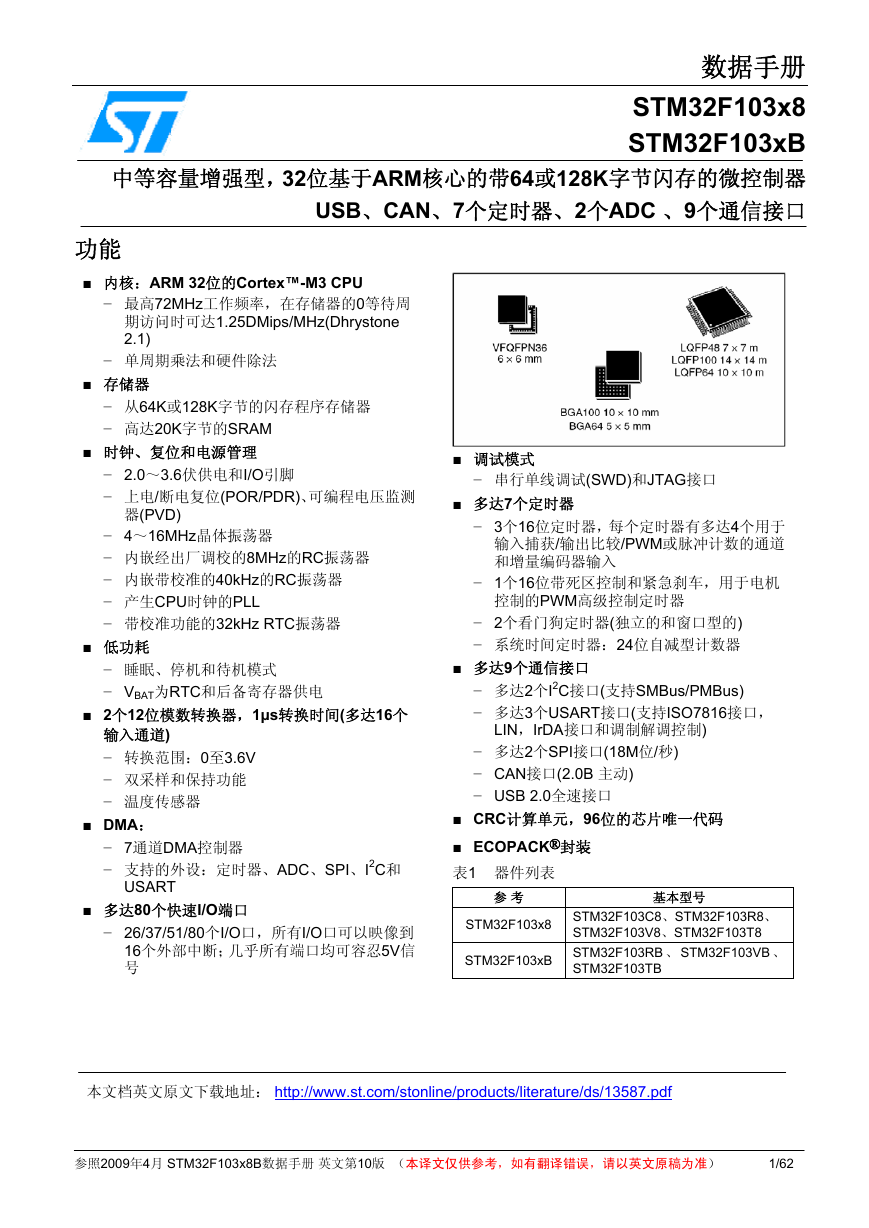 STM32F103x8B_DS_CH_V10(7STM32中文数据手册).pdf
STM32F103x8B_DS_CH_V10(7STM32中文数据手册).pdf FX2N系列PLC培训教程.pdf
FX2N系列PLC培训教程.pdf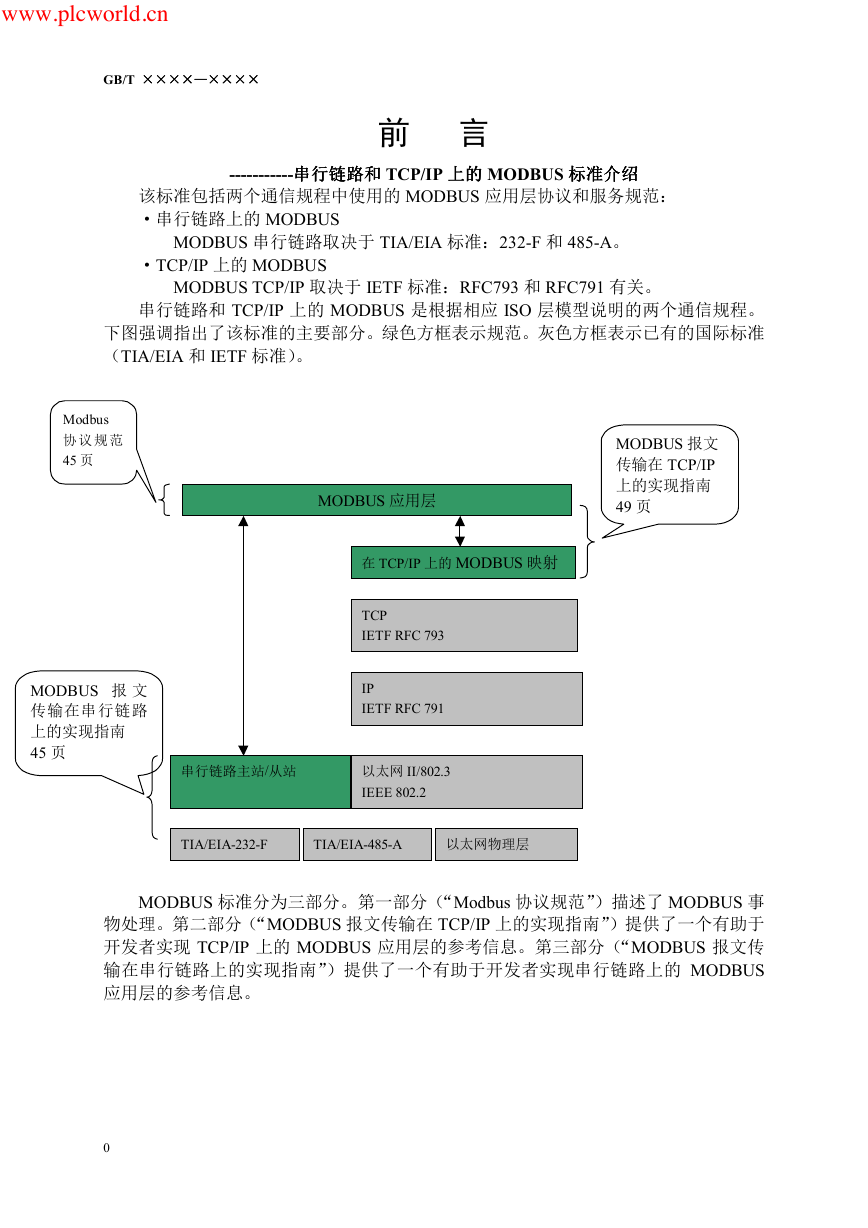 Modbus协议资料.pdf
Modbus协议资料.pdf WM8978中文资料(芯片资料).doc
WM8978中文资料(芯片资料).doc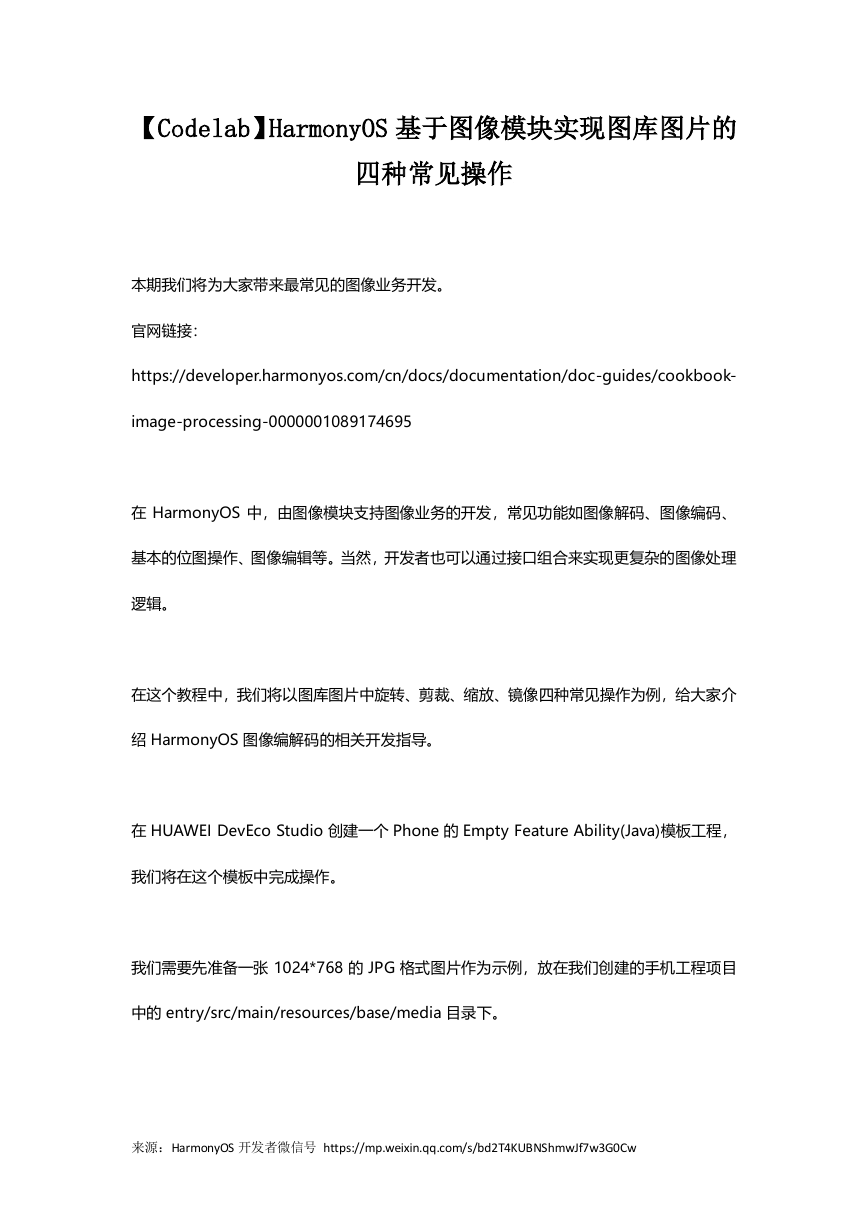 5-1.【Codelab】HarmonyOS基于图像模块实现图库图片的四种常见操作.pdf
5-1.【Codelab】HarmonyOS基于图像模块实现图库图片的四种常见操作.pdf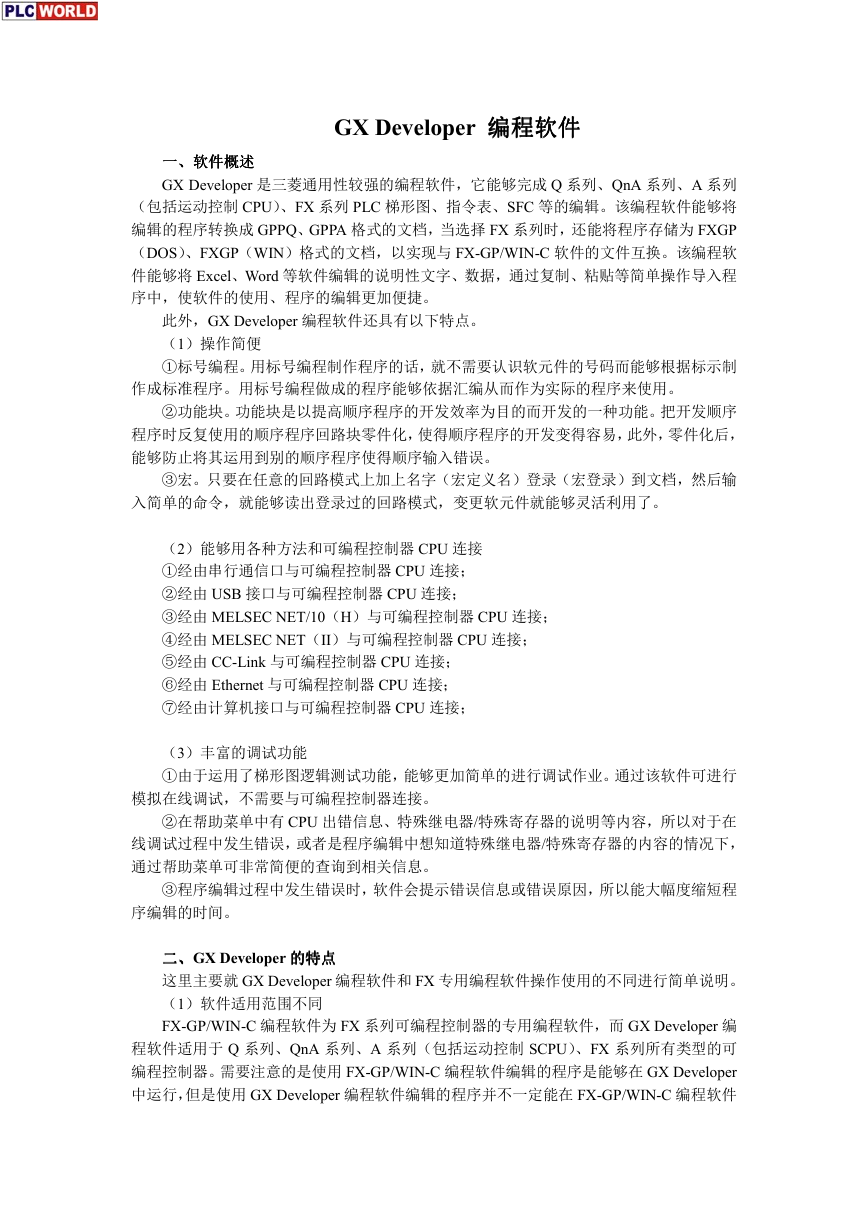 GX Developer 编程软件使用说明.pdf
GX Developer 编程软件使用说明.pdf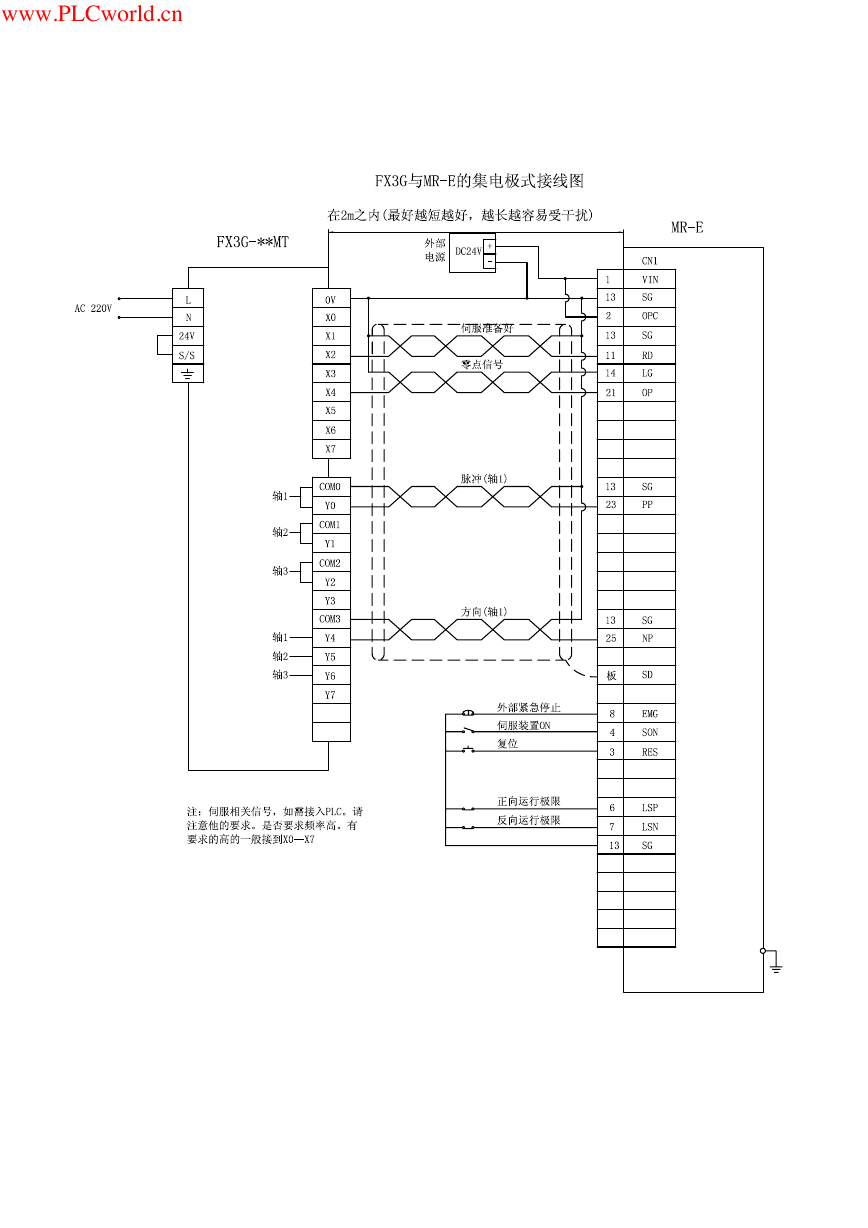 MR-E伺服与FX3G接线图.pdf
MR-E伺服与FX3G接线图.pdf ATK-NEO-6M GPS模块常见问题汇总_201400721.pdf
ATK-NEO-6M GPS模块常见问题汇总_201400721.pdf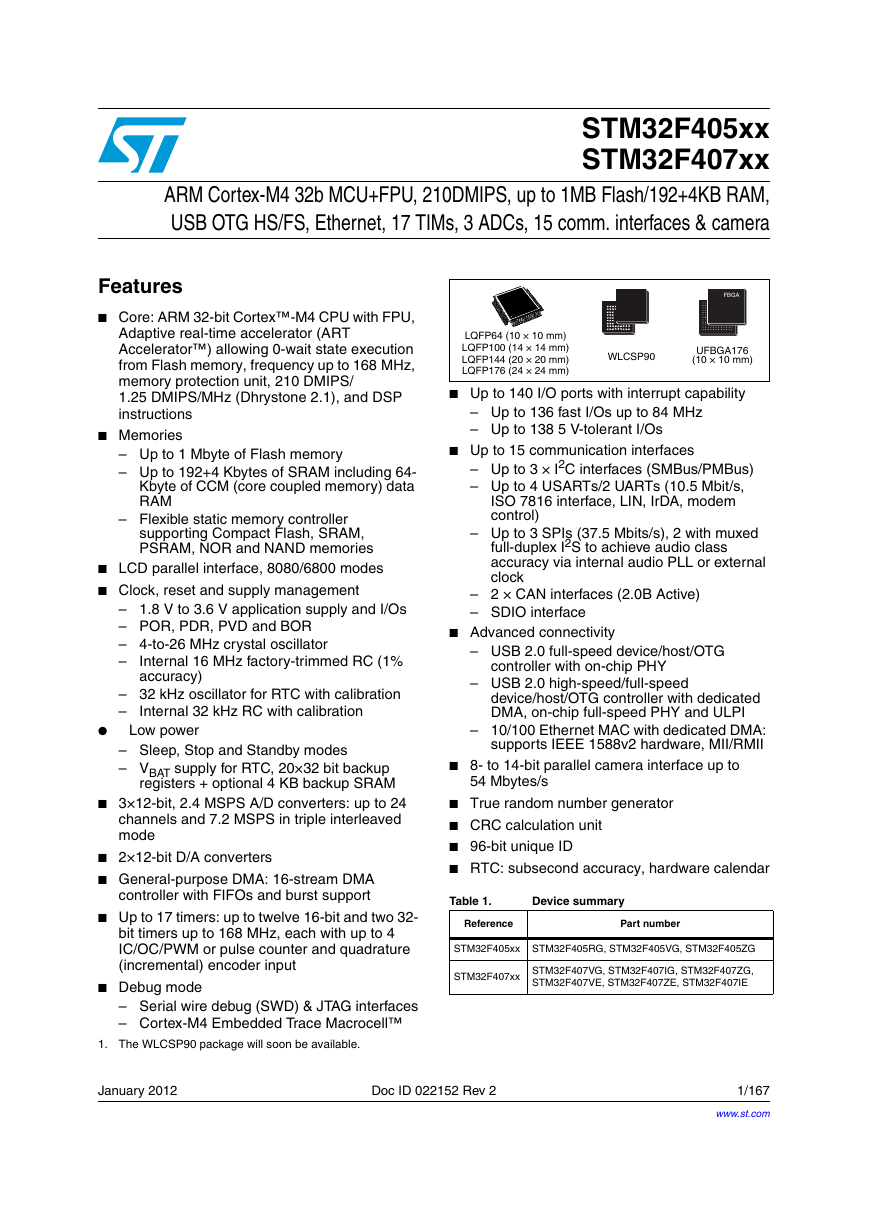 STM32F407ZGT6(芯片资料).pdf
STM32F407ZGT6(芯片资料).pdf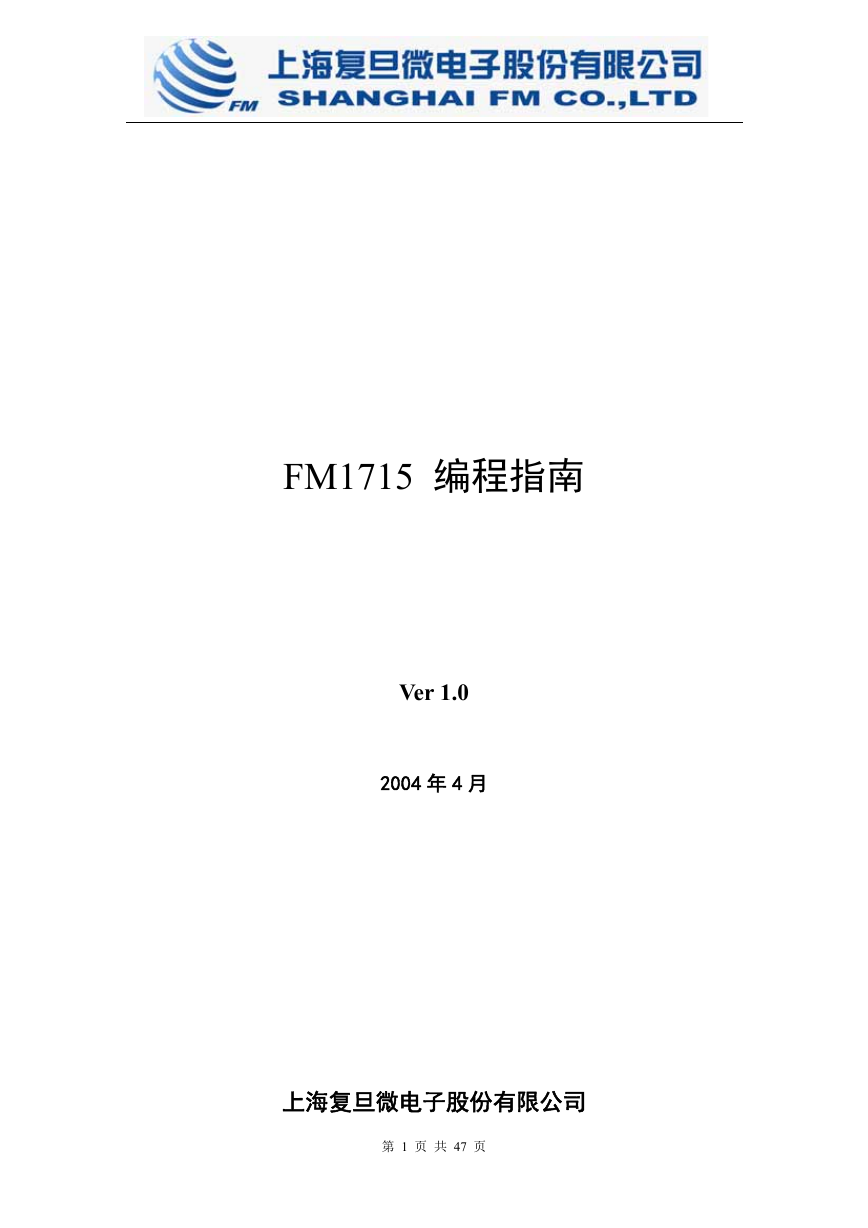 FM1715编程指南.pdf
FM1715编程指南.pdf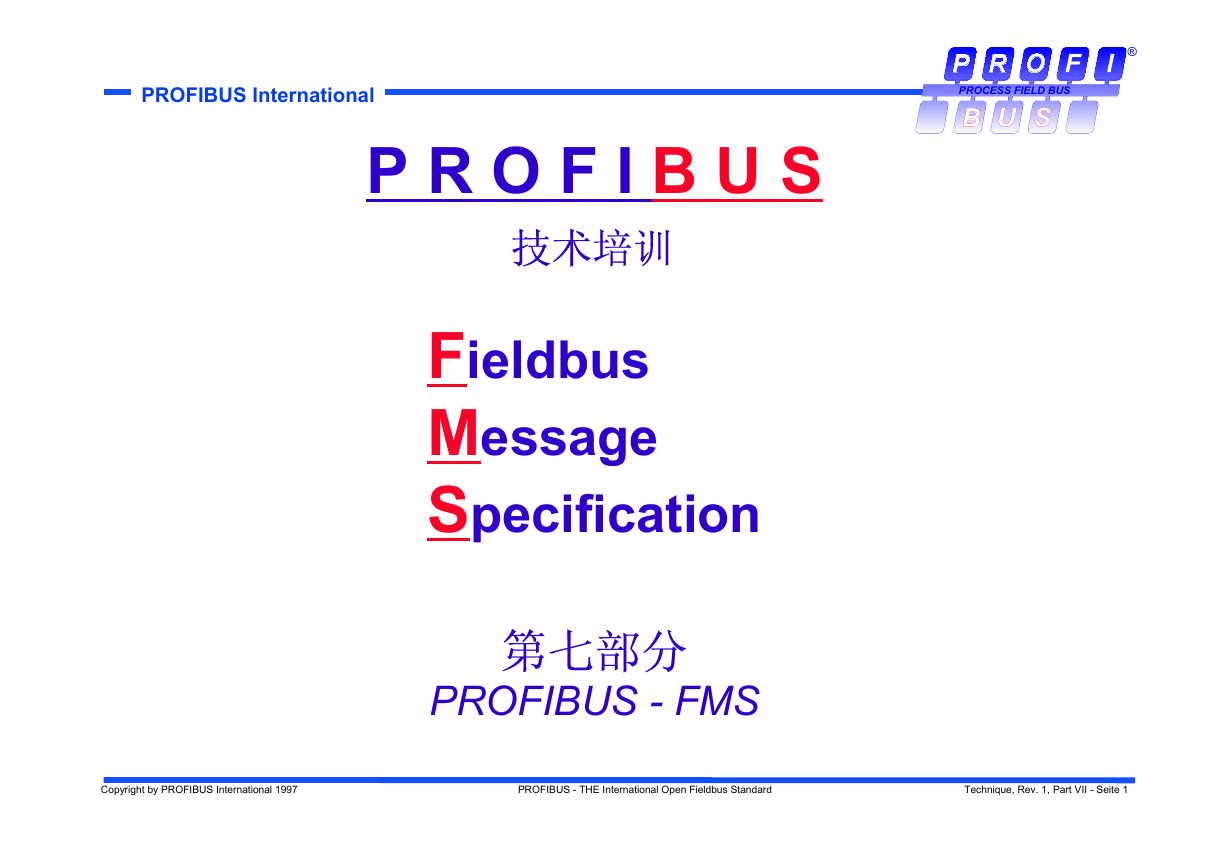 Profibus教程-7.PROFIBUS-FMS.pdf
Profibus教程-7.PROFIBUS-FMS.pdf